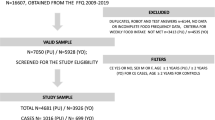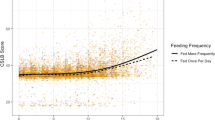Abstract
Ageing, like all physiological effects, has a multifactorial origin and is linked to the progressive reduction in the function of some organs and systems. Feeding can play an important role in the control of the ageing process by the improvement of quality of life and the prevention of some pathologies associated with age (renal diseases, obesity, rheumatism, dental pathologies, cardiovascular disorders). Clinical nutrition of old dogs allows us to clarify the animals' nutritional requirements, the required balance of nutrients, the quality of ingredients and dietetic function of some substances.
Twenty commercial dry foods formulated for old dogs were analysed. A wide variability of chemical composition was observed among the samples. Very different values were found for size and hardness of kibbles (parameters correlated with the incidence of some dental diseases). Good availability of foods with different nutritional characteristics could be useful to the needs of geriatric dogs. Similarly, a balanced home-made ration could satisfy the specific requirements of old dogs and gratify their owners. In conclusion, a diet for ageing dogs should be “personalized”, considering both the nutritional and extra-nutritional factors, which contribute to guarantee optimal well-being and health.
Similar content being viewed by others
Abbreviations
- BW:
-
body weight
- CLA:
-
conjugated linoleic acid
- FOS:
-
fructo-oligosaccharides
- ME:
-
metabolisable energy
- MOS:
-
mannan-oligosaccharides
- TDF:
-
total dietary fibre
- WHC:
-
water holding capacity
References
Anderson, R.S., 1996. Feeding older pets. In: N. Kelly and J. Wills (eds), Manual of Companion Animal Nutrition & Feeding(BSAVA, Gloucestershire, UK), pp. 93–98
Armstrong, P.J. and Lund, E.M., 1996. Changes in body condition and energy balance with aging.Veterinary Clinical Nutrition, 3(3), 83–87
Bailoni, L., Cerchiaro, I. and Malocco, S., 2004. Indagine sulla formulazione, sulle caratteristiche chimiche e sulle proprietà fisiche di alimenti commerciali destinati a cani anziani.Summa, in press.
Benedich, A., 1989. Carotenoids and the immune response.Journal of Nutrition, 119(1), 112–115
Boari, A. and Aste, G., 2003. Diagnosis and management of geriatric canine endocrine disorders.Veterinary Research Communications, 27(Suppl. 1), 543–554
Bontempo, V., Piano, S. and Dell'Orto, V., 2003. La dietetica terapeutica in alcune manifestazioni della senescenza nel cane e nel gatto.Summa, 20(8), 15–26
Case, L.P., Carey, D.P., Hirakawa, D.A. and Daristotle, L., 2000. Geriatrics. In:Canine and Feline Nutrition(Mosby, St. Louis, USA), pp. 275–299
Dall'Ara, P., 2003. Immune system and ageing in the dog: Possible consequences and control strategies.Veterinary Research Communications, 27(Suppl. 1), 535–542
Debraekeler, J., Gross, K.L. and Zicker, S.C., 2000. Normal dogs. In: M.S. Hand, C.D. Thatcher, R.L. Remillard and P. Roudebush (eds.), Small Animal Clinical Nutrition(Mark Morris Institute, Topeka, Kansas, USA), pp. 213–260
Guglielmini, C., 2003. Cardiovascular diseases in the ageing dog: Diagnostic and therapeutic problems.Veterinary Research Communications, 27(Suppl. 1), 555–560
Kearns, R.J., Hayek, M.G., Turek, J.J., Meydani, M., Burr, J.R., Greene, R.J., Marshall, C.A., Adams, S.M., Borgert, R.C. and Reinhart, G., 1999. Effect of age, breed, and dietary omega-6 (n− 6) omega-3 (n− 3) fatty acid ratio on immune function, eicosanoid production, and lipid peroxidation in young and aged dogs.Veterinary Immunology and Immunopathology, 69, 165–183
Mocchegiani, E., Muzzioli, M. and Giacconi, R., 2001. Zinc and immunoresistance to infection in aging: New biological tools.Trends in Pharmacological Sciences, 22(3), 112–113
Prasad, A.S., 1998. Zinc and immunity.Molecular and Cellular Biochemistry, 188(1/2), 63–69
Spada, E., Proverbio, D., Bottoni, C. and Salimei, E., 2003. Effetto degli antiossidanti e degli aminoacidi nella disfunzione cognitiva canina.Atti Società Italiana Scienze Veterinarie, Vol. LVII, Ischia (Na), 25–27 settembre 2003, pp. 271–272
Wander, R.C., Hall, J.A., Gradin, J.L., Du, S.H. and Jewell, D.E., 1997. The ratio of dietary (n− 6) and (n− 3) fatty acid influences immune system function, eicosanoid metabolism, lipid peroxidation and vitamin E status in aged dogs.Journal of Nutrition, 127, 1198–1205
Author information
Authors and Affiliations
Corresponding author
Rights and permissions
About this article
Cite this article
Bailoni, L., Cerchiaro, I. The Role of Feeding in the Maintenance of Well-Being and Health of Geriatric Dogs. Vet Res Commun 29 (Suppl 2), 51–55 (2005). https://doi.org/10.1007/s11259-005-0011-7
Published:
Issue Date:
DOI: https://doi.org/10.1007/s11259-005-0011-7




